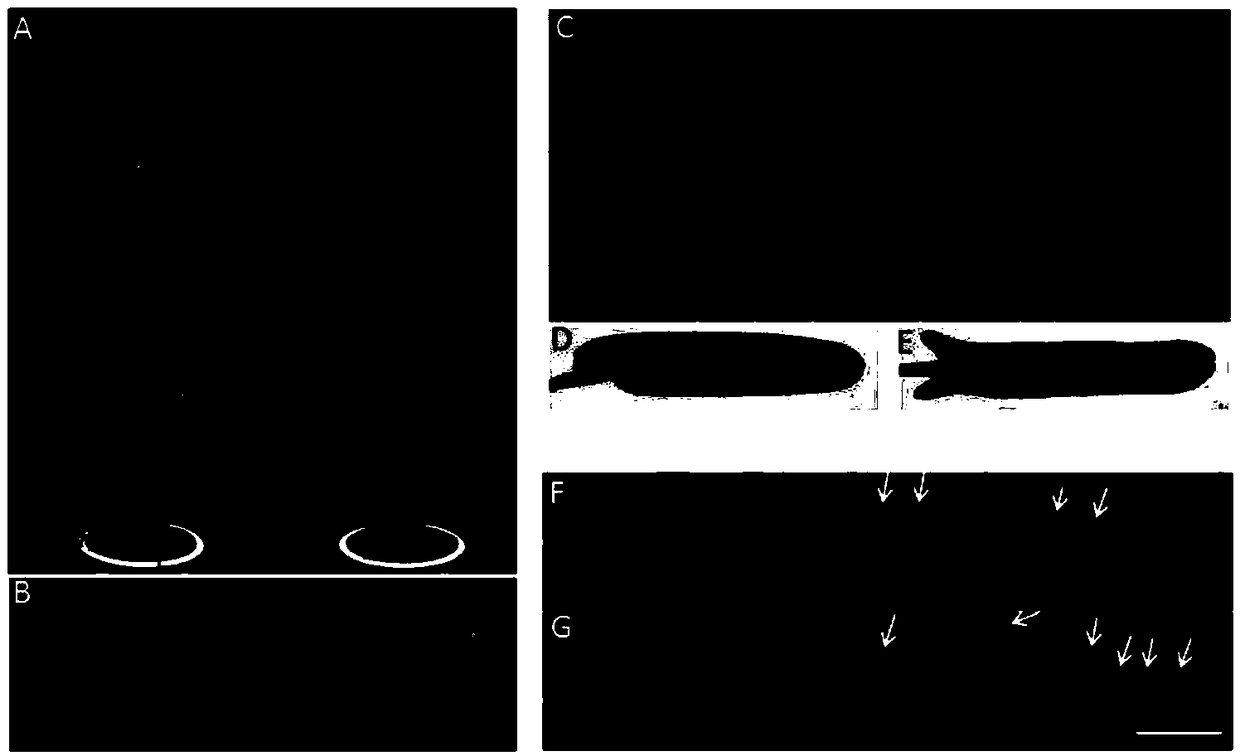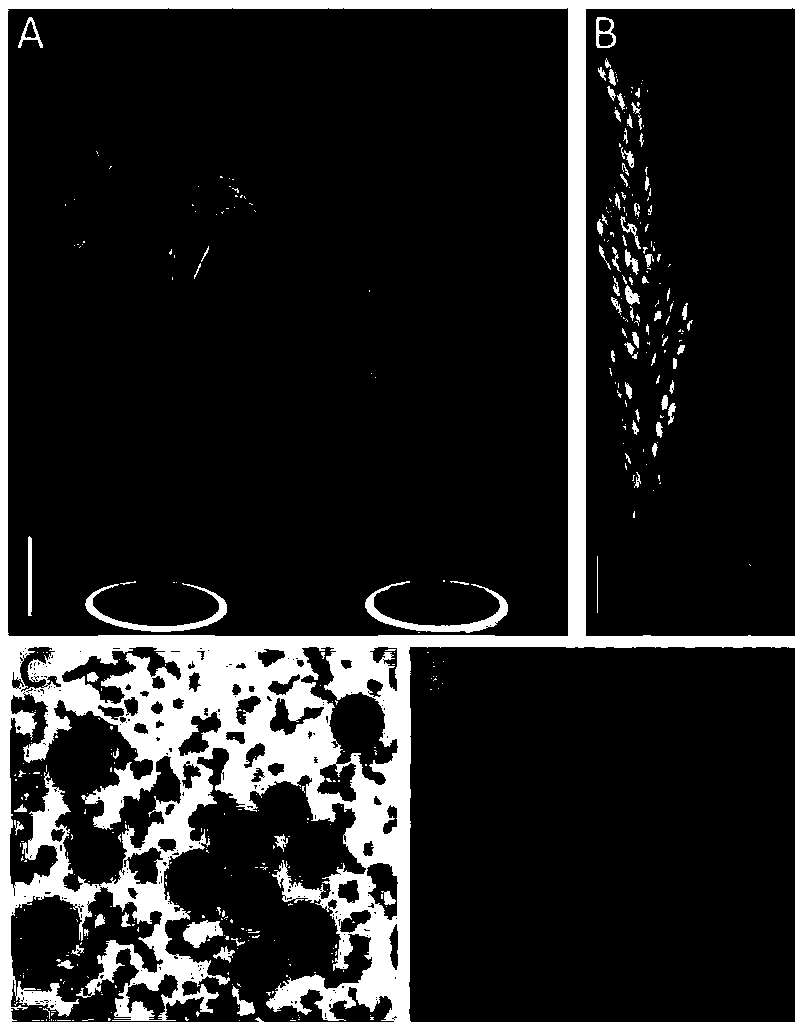Method for obtaining rice mutant with lost genetic intervention and application thereof
A mutant and rice technology, applied in the biological field, can solve the problems of complex rice hybrid breeding operations, speed up the replacement of rice chromosome segments, etc., and achieve the effects of improving breeding efficiency, simplifying the breeding process, and speeding up the exchange
- Summary
- Abstract
- Description
- Claims
- Application Information
AI Technical Summary
Problems solved by technology
Method used
Image
Examples
Embodiment approach
[0023] According to a typical embodiment of the present invention, gene editing tools such as CRISPR-Cas9, ZFN, TALEN or CRISPR-cpf1 are used to prevent the expression of the first 350 amino acids of the ZEP1 protein or to lose protein activity / function. Preferably, the CRISPR-Cas9 technology is selected, which is relatively mature and easy to operate. In addition, RNAi and other methods can also be used to interfere with the expression of ZEP1 protein to achieve the above purpose. Methods of inhibiting protein expression or inhibiting protein activity other than RNA interference, such as protein modification after expression, can achieve the same effect.
[0024] According to a typical embodiment of the present invention, the first 350 amino acids of the ZEP1 protein are not expressed or the activity / function of the protein is lost by means of frameshift mutation. Preferably, CRISPR-Cas9 is used to edit the rice synaptonemal complex gene ZEP1, the editing site is located at t...
Embodiment 1
[0028] The specific operation steps are as follows:
[0029] 1. Construction of gene knockout vector
[0030] According to the requirements of the CRISPR-Cas9 system for the target sequence (PAM (Protospacer Adjacent Motif) is NGG, and the sequence length is 22 bp), a specific target sequence was selected on the ZEP1 gene sequence, and according to the gRNA primer design principle, the F direction primer and the R Add enzyme-cleaved junction bases to both ends of the primers, and the designed primers are named ZEP1-gRNA-F / ZEP1-gRNA-R.
[0031] ZEP1-gRNA-F has the following sequence: SEQ ID NO: 1 (ggcatcggggcttaggggtctcga);
[0032] ZEP1-gRNA-R has the following sequence: SEQ ID NO: 2 (aaactcgagacccctaagccccga).
[0033] The designed ZEP1-gRNA-F / ZEP1-gRNA-R primers were annealed at 100°C for 5 minutes, cooled naturally, and the annealed product was ligated with the intermediate carrier Sk-gRNA that had been digested with Aar I to obtain the ligated product. The ligated produ...
Embodiment 2
[0051] The specific operation steps are as follows:
[0052] 1. Construction of RNA interference recombinant vector
[0053] A 159bp fragment was amplified by using the reverse-transcribed cDNA of rice panicle total RNA as a template and using ZEP1-RNAi-F / ZEP1-RNAi-R as primers. ZEP1-RNAi-F (SEQ ID NO: 4): 5'-ACG GTC GAC GCTTAGTGGTTTTACGGTTAAGG-3' (the underline is the Sal I restriction site), ZEP1-RNAi-R (SEQ ID NO: 5): 5'-CGC GGATCC TGTTCAAATTTGTCC TTGGCAG-3' (the underline is the restriction site of BamH I).
[0054] The amplified sequence is (SEQ ID NO: 6):
[0055] GCTTAGTGGTTTTACGGTTAAGGTAACTGAGCTAGATAAAGAGCACACATCAATTTCAAGTCATGTCACTCAGTTGATTTCTTCATTTGAGAGATATGATGGAAAGGTTCACGAGGAAAAAATGTTGATGATAAAATCTGCCAAGGACAAATTTGAACA
[0056] The fragment was digested with BamHI and SalI, recovered, and ligated with the vector pUCCRNAi that had undergone the same digestion to obtain intermediate vector 1.
[0057] The recovered fragment was ligated with intermediate vector 1 d...
PUM
 Login to View More
Login to View More Abstract
Description
Claims
Application Information
 Login to View More
Login to View More - R&D
- Intellectual Property
- Life Sciences
- Materials
- Tech Scout
- Unparalleled Data Quality
- Higher Quality Content
- 60% Fewer Hallucinations
Browse by: Latest US Patents, China's latest patents, Technical Efficacy Thesaurus, Application Domain, Technology Topic, Popular Technical Reports.
© 2025 PatSnap. All rights reserved.Legal|Privacy policy|Modern Slavery Act Transparency Statement|Sitemap|About US| Contact US: help@patsnap.com



